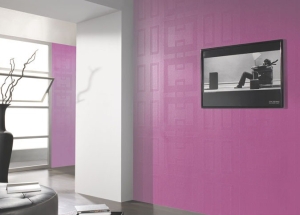Wallpaper for painting - it's easy, profitable and durable. Even if the walls in your apartment are uneven, this is not a problem. It is not necessary to hire workers, buy a large amount of alinex and invest in the fact that you reach a perfectly level surface of your walls. There is a much easier way - to glue the wallpaper under the painting. Non-woven wallpaper is especially good with the smoothing of irregularities and small cracks on the walls. How to properly glue them, will be discussed in this article.
Content
Types, advantages and disadvantages of wallpaper for painting
Wallpaper for painting - a special wallpaper without a picture, wider horizontally, with a relief structure. Such wallpaper after pasting it is possible to paint in any shade, yes not one and not even two times. In fact, you can paint such wallpaper more than ten or even fifteen times.
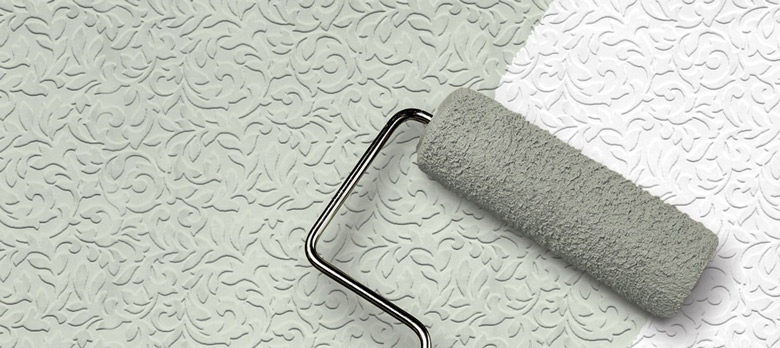
In fact, this is the most important advantage of such wallpapers - they are suitable for multiple coloring, that is, when you want to change the color of the walls, you do not have to re-paste the wallpaper. For painting any dispersion paints are used, for example, water-emulsion paint. However, wallpaper for painting can be used without staining. But why then glue them? You can use ordinary. And these special wallpapers are glued in order to paint later.
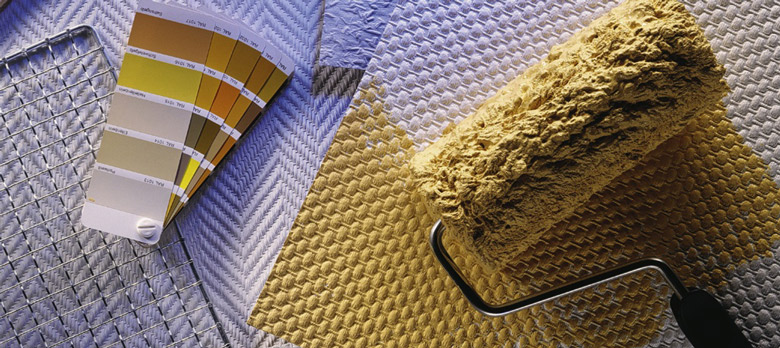
Wallpaper for painting can be of several types: on paper basis, on non-woven and fiberglass for painting.
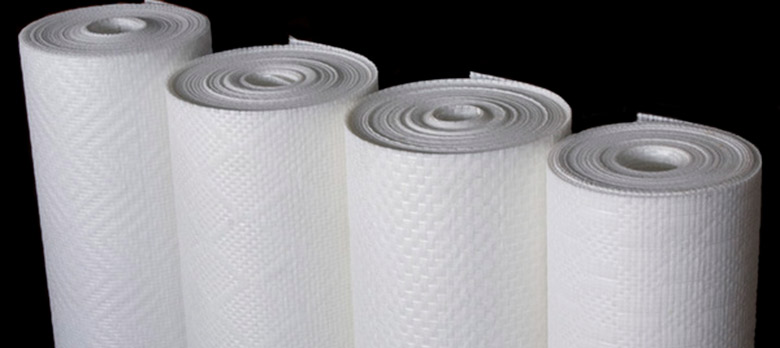
Both paper and nonwoven wallpaper belong to the category of vinyl, because they have a thin, applied on top, a vinyl layer. This vinyl layer also gives the possibility of their direct staining. Also, non-woven wallpaper for painting are also completely non-woven. The difference between them in price - completely non-woven wallpaper are more expensive.
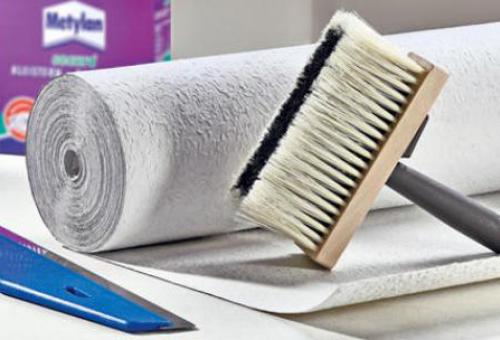
Steklooboi also have the same nonwoven fabric as a base, but on top they are covered with fibrous threads, which are made from quartz sand with the addition of the necessary constituents.
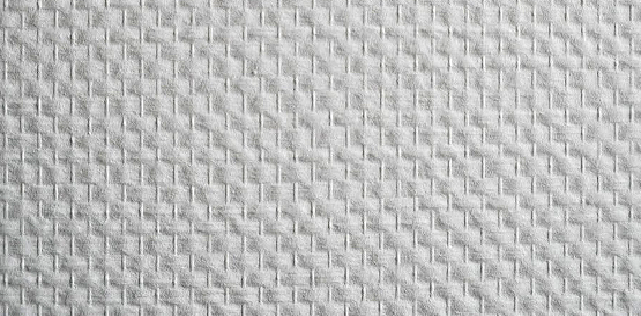
It can not be unequivocally said that this type of wallpaper is worse, but that one is better. They all have their advantages and disadvantages. All enjoy a well-deserved popularity among consumers and all are not only practical, reliable and effective coating for walls, but also a very fashionable and beautiful element of the room.

The difference is in their longevity. So, if non-woven and fiberglass can be painted even up to ten and fifteen times, then paper ones - only five or seven times.
How to prepare the walls for wallpaper gluing
Before you start to wallpaper, you need to check the condition of the walls in the room being repaired. If you have not already done so, clean them from the previous wallpaper. Make sure that the walls are not only cleaned, but also have a light, uniform throughout the surface.

Now they need to be primed, preferably with an acrylic water-based primer. This should be done because the acrylic primer can help to evenly absorb the wallpaper glue, and also strengthen the surface of the walls, removing dust and small dirt from them. Priming walls should not be done in advance, but just before you start to glue the wallpaper for painting.

In advance it is also necessary to choose and purchase glue under the wallpaper. It is necessary to pay attention when buying glue for what kind of wallpaper it is designed for. It is better if it is a special glue based on PVA. Manufacturers indicate on the packaging information about what kind of wallpaper this glue is suitable for - heavy, light or medium. Wallpaper for painting - this is a heavy wallpaper. Often the packaging of the glue specifies the type of wallpaper for which it is intended.
Wallpaper placed on the walls with a special glue for heavy or non-woven wallpaper. The best wallpaper glue is the glue of such world famous brands as Metylan or QUELYD, as well as Quality or Pufas.

It is applied to the walls immediately after the primer has completely dried, strictly following the instructions for its use and dilution in water. With regard to non-woven wallpaper, it is important to note that the glue is applied only to the surface of the walls. On the wallpaper it is not applied. Do not forget about it!
Glue wallpaper for painting
Often people who repair themselves, ask the question: "Where do you start to glue the wallpaper?" The answer is the following: "Wallpaper for painting begins to glue from the corner of the room."

Beforehand, follow the roll of wallpaper to measure and cut off several strips, the size of the height of the pasted wall. Then, on the primed wall with glue applied to it, you must apply a cut strip of wallpaper from the top down. Do not try to apply glue directly to the entire surface of the wall. After all, it can thus dry up before you start to glue the wallpaper. Apply glue first directly to the place where you are now planning to paste the wallpaper sheet. After gluing one strip, apply glue further to where you will glue the next strip of wallpaper and so on.

Glue the wallpaper to the wall as if you are drawing a Christmas tree - at first the trunk, and then, from the top to the bottom - the branches of the tree. The band must be carefully smoothed out, removing the formed air bubbles, starting from the middle of the canvas (from the "trunk" of the tree), to the left and right edges (as if drawing branches hanging down the tree).
The wallpaper for painting should be smoothed with either a clean, dry and non-dyed cloth, or a spatula or sponge. Since any wallpaper for painting, and non-woven, including, very dense, their pasting is carried out the joint in the joint, without overlap.

Remains of glue from the wallpaper, accidentally got there, are removed with a damp clean cloth or sponge. If you picked up the correct glue and removed it immediately after it accidentally hit the wallpaper, there will be no trace left of it.

After you have pasted the wallpaper under the painting, wait until they dry up and then proceed to painting the non-woven wallpaper, so you will get an absolutely seamless covering of the walls of the room. The advantage of wallpaper for painting is that they can always be repainted, and more than once.

This can be done at any time, without preliminary preparation of walls and additional costs. If you decide to change the design of the room or just tired of the old color of the walls, then with the wallpaper under the painting there are no barriers to change - pick up a brush, paint and everything changes literally before our eyes! Agree that it's much easier than completely re-changing the wallpaper!


